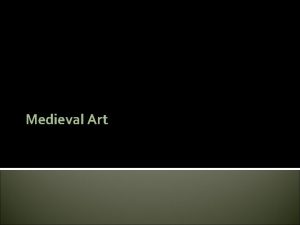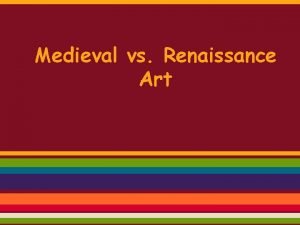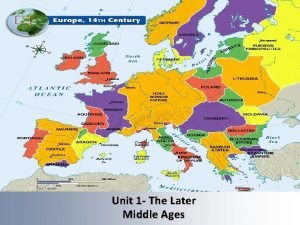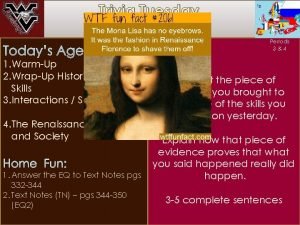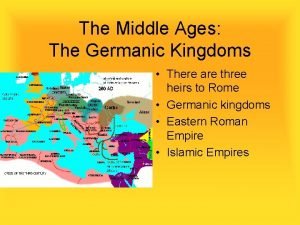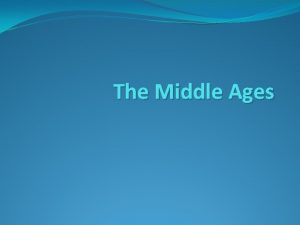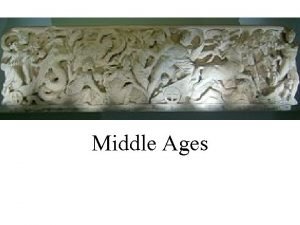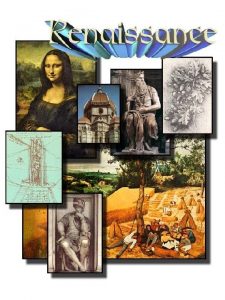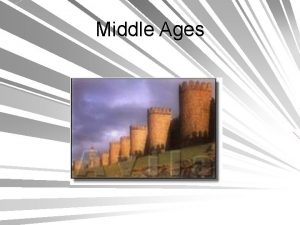Medieval Art Also known as the Middle Ages









- Slides: 9

Medieval Art Also known as the Middle Ages, came after the fall of the Roman Empire.

Illuminated Manuscripts The area had been overrun by barbarians. � Tribes moved around which created a need for portable art. � Geometric designs and animal motifs were popular � Manuscript illumination became an important art form. �

The Lindisfarne Gospel Book � � � Monks spent their lives illustrating scripture passages with animals, intricate designs, and detail. They believed this paid tribute to God. Illustrated 689 -721 Great Britain Made of bleached animal skin called vellum These portable artworks helped to share the word of God with people as they searched for permanent homes

� The X-P represent the first two letters from Christ’s name in Greek (Chi-Rho). Does this sound familiar? ? ? !!!! � The illustration uses abstract and geometric designs of minute detail. � Hidden within the curves are serpents, dragons and other animals.

The Palatine Chapel of Charlemagne Emperor of the West from 800814 � Is responsible for the Carolingian Renaissance- a revival of art, religion, and culture through the Catholic Church � He had the Palatine Chapel built in Aachen, Germany � Designed by Odo of Metz, it is the greatest surviving monument of the Carolingian era �

Charlemagne wanted a chapel that rivaled the amazing churches of Rome and Byzantine � The chapel is shaped like an octagon � The interior of the dome was originally covered with mosaics � The chapel still holds the remains of Charlemagne � The plan and decoration of the building combines elements of Classical, Byzantine, and the Pre. Romanesque periods �






